Flight to Hawaii promises prime view of total solar eclipse
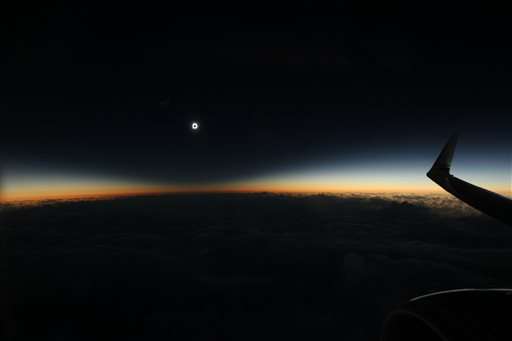
Skygazers from around the country caught a flight from Alaska to Hawaii for prime viewing of a total solar eclipse that will unfold over parts of Indonesia and the Indian and Pacific oceans.
A dozen eclipse enthusiasts were among the 181 passengers on the plane Tuesday that departed Anchorage for Honolulu. The rare event comes when the moon is close enough to Earth to completely block out the sun.
Joe Rao, an associate astronomer at the American Museum of Natural History's Hayden Planetarium in New York, called Alaska Airlines last fall, explaining that the flight would be in the right place for the eclipse. The route was expected to encounter the darkest shadow of the moon as it passed over Earth.
Problem was, the plane would be passing by nearly a half-hour too soon.
The airline said it rescheduled the flight to depart 25 minutes later, and it is expected to rendezvous with the eclipse's sweet spot nearly 700 miles north of Honolulu. After the schedule tweak, Rao and a dozen other astronomy aficionados booked seats for the big show at 36,000 feet.
Rao, like other self-dubbed "eclipse geeks," was thrilled about setting out to witness his 11th such spectacle.
"It is an experience," he said of watching the sun turn into a giant black disk in the sky. "Every fiber of you gets involved in those few moments when the sun is totally eclipsed."
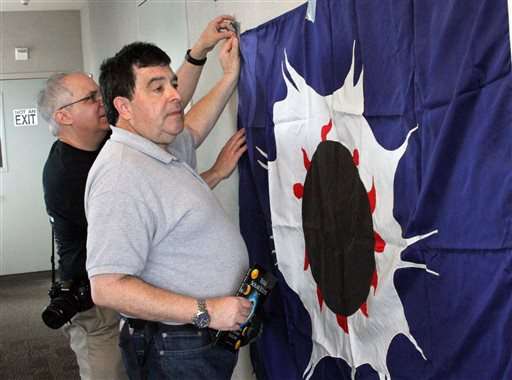
The eclipse is expected to last just under two minutes. The last total solar eclipse was in March 2015, and the one before that was in 2012.
Craig Small, a semiretired Hayden Planetarium astronomer, was taking off to view his 31st total eclipse. If all goes according to plan, this event will put him over the 100-minute mark in experiencing eclipses.
To mark each viewing, Small carries a special eclipse flag made in 1972.
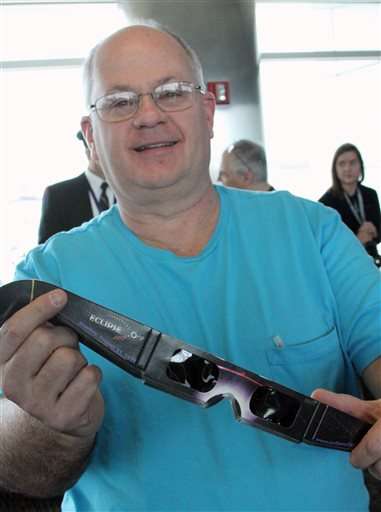
Also on board was Dan McGlaun, who brought 200 pairs of special filter glasses to distribute to other passengers. McGlaun, a project manager who runs eclipse2017.org, will be viewing his 12th total eclipse.
"It's going to be amazing. It always is," he said before boarding. "It's a universal reaction when you see an eclipse. You cheer, you scream, you cry."
-

Craig Small, a semi-retired astronomer at the American Museum of Natural History's Hayden Planetarium in New York City, speaks to reporters in Anchorage, Alaska, on Tuesday, March 8, 2016. He and other so-called eclipse chasers boarded a special flight from Anchorage to Honolulu to view the eclipse on Tuesday from the air. The eclipse will only be visible in parts of southeast Asia and the North Pacific Ocean, including the flight path of the Alaska Airlines flight. (AP Photo/Mark Thiessen) -
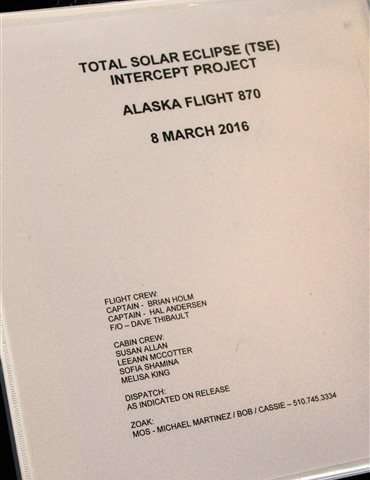
A binder about the plan to intercept a total solar eclipse sits on a chair in the waiting area of the Ted Stevens Anchorage International Airport in Anchorage, Alaska, on Tuesday, March 8, 2016. Many so-called eclipse chasers boarded a special flight from Anchorage to Honolulu to view the eclipse on Tuesday from the air. The eclipse will only be visible in parts of southeast Asia and the North Pacific Ocean, including the flight path of the Alaska Airlines flight. (AP Photo/Mark Thiessen) -
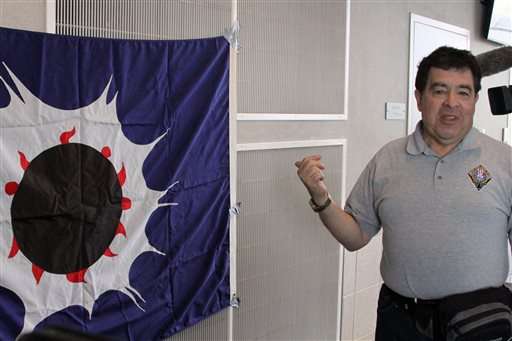
Craig Small, a semi-retired astronomer at the American Museum of Natural History's Hayden Planetarium in New York City,stands next to an eclipse flag in 1972 he hung at the Ted Stevens Anchorage International Airport in Anchorage, Alaska, on Tuesday, March 8, 2016. He and other so-called eclipse chasers boarded a special flight from Anchorage to Honolulu to view the eclipse on Tuesday from the air. The eclipse will only be visible in parts of southeast Asia and the North Pacific Ocean, including the flight path of the Alaska Airlines flight. (AP Photo/Mark Thiessen)
© 2016 The Associated Press. All rights reserved.




















